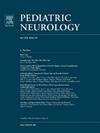小儿水肿素-4 阳性神经脊髓炎谱系障碍的种族、民族和社会经济差异。
IF 3.2
3区 医学
Q2 CLINICAL NEUROLOGY
引用次数: 0
摘要
背景:只有5%的水通道蛋白-4阳性神经脊髓炎视网膜频谱障碍(AQP4+ NMOSD)病例在儿童期发病。有研究表明,黑人/非裔美国人(AA)成人 NMOSD 患者的预后较差;然而,关于儿童期 NMOSD 的数据却相互矛盾且有限。本研究评估了儿科 AQP4+ NMOSD 结果的种族、民族和社会经济差异:方法:确定了 2009 年至 2021 年间在三家儿科三级护理中心接受护理的 38 名 AQP4+ NMOSD 儿科患者。患者地址与美国人口普查提供的社会经济数据相关联。结果显示:与非西班牙裔白人相比,儿童NMOSD患者的社会经济状况要好得多:与非西班牙裔白人儿童相比,黑人/美国黑人儿童的残疾状况扩展量表(EDSS)明显更高(2.46 vs 0.33,P = 0.003),在确诊 NMOSD 后的两年中,入院次数增加 2.37 次(P = 0.002),住院天数增加 28.40 天(P = 0.002)。此外,参加公共保险的儿童的复发率高于参加私人保险的儿童(P = 0.046)。在两年后和最近一次随访中,EDSS 明显较高的儿童与居住在收入中位数较低、贫困指数较高、领取补助收入的人口比例较高、贫困以及住房空置的人口普查区相关(所有 P 均为结论):我们发现了小儿 AQP4+ NMOSD 在临床结果和医疗保健使用方面的种族、民族和社会经济差异。我们需要更多的前瞻性和家庭层面的数据,以剖析遗传学、结构性种族主义和健康的社会决定因素之间的相互作用,从而制定干预措施,优化这一人群的护理和治疗效果。本文章由计算机程序翻译,如有差异,请以英文原文为准。
Racial, Ethnic, and Socioeconomic Disparities in Pediatric Aquaporin-4-Positive Neuromyelitis Optica Spectrum Disorder
Background
Only 5% of aquaporin-4-positive neuromyelitis optica spectrum disorder (AQP4+ NMOSD) cases emerge during childhood. Poorer outcomes have been suggested in black/African American (AA) adults with NMOSD; however, conflicting and limited data exist for pediatric-onset NMOSD. This study evaluates racial, ethnic, and socioeconomic disparities in pediatric AQP4+ NMOSD outcomes.
Methods
Thirty-eight pediatric patients with AQP4+ NMOSD cared for at three pediatric tertiary care centers between 2009 and 2021 were identified. Patient addresses connected to socioeconomic measures available from the US Census. Demographic characteristics, pertinent clinical outcomes, and health care utilization in the two years following diagnosis were captured.
Results
Compared with non-Hispanic White children, Black/AA children had a significantly higher Expanded Disability Status Scale (EDSS) (2.46 vs 0.33, P = 0.003), 2.37 more hospital admissions (P = 0.002), and 28.40 additional inpatient days (P = 0.002) in the two years following their NMOSD diagnosis. Additionally, children with public insurance had higher relapse rates than those with private insurance (P = 0.046). At two years and at the most recent follow-up, a significantly higher EDSS was correlated with children living in census tracts with a lower median income, higher deprivation index, and higher proportion of population on assisted income, in poverty, and with vacant housing (all P < 0.05).
Conclusions
We identified racial, ethnic, and socioeconomic disparities in clinical outcomes and health care utilization in pediatric AQP4+ NMOSD. Further prospective and household-level data are needed to dissect the interplay of genetics, structural racism, and social determinants of health so that interventions to optimize care and outcomes for this population may be developed.
求助全文
通过发布文献求助,成功后即可免费获取论文全文。
去求助
来源期刊

Pediatric neurology
医学-临床神经学
CiteScore
4.80
自引率
2.60%
发文量
176
审稿时长
78 days
期刊介绍:
Pediatric Neurology publishes timely peer-reviewed clinical and research articles covering all aspects of the developing nervous system.
Pediatric Neurology features up-to-the-minute publication of the latest advances in the diagnosis, management, and treatment of pediatric neurologic disorders. The journal''s editor, E. Steve Roach, in conjunction with the team of Associate Editors, heads an internationally recognized editorial board, ensuring the most authoritative and extensive coverage of the field. Among the topics covered are: epilepsy, mitochondrial diseases, congenital malformations, chromosomopathies, peripheral neuropathies, perinatal and childhood stroke, cerebral palsy, as well as other diseases affecting the developing nervous system.
 求助内容:
求助内容: 应助结果提醒方式:
应助结果提醒方式:


